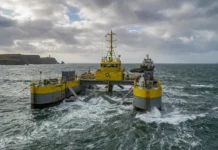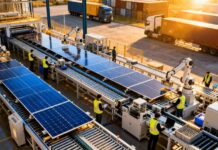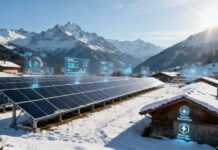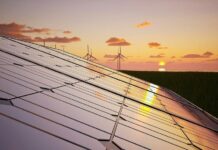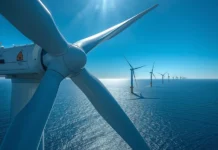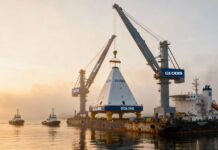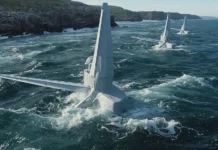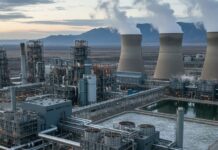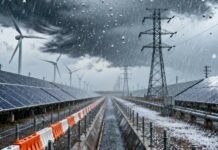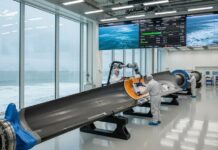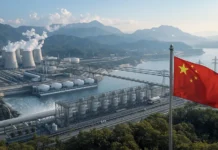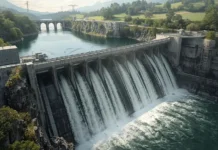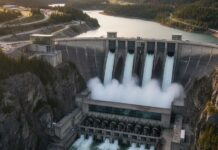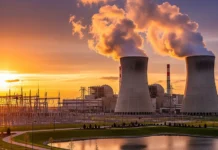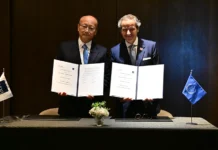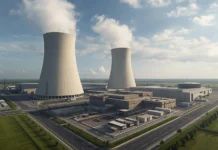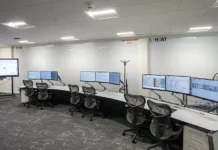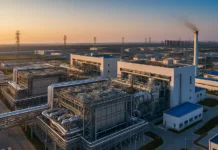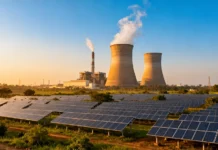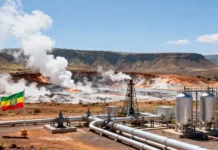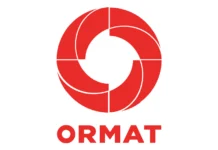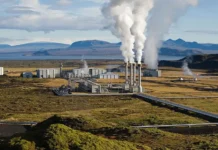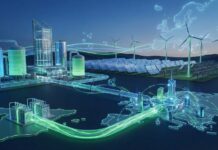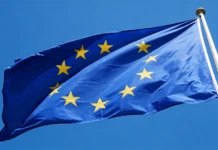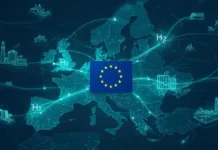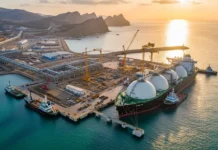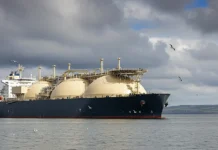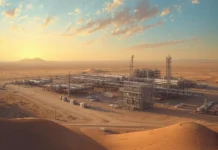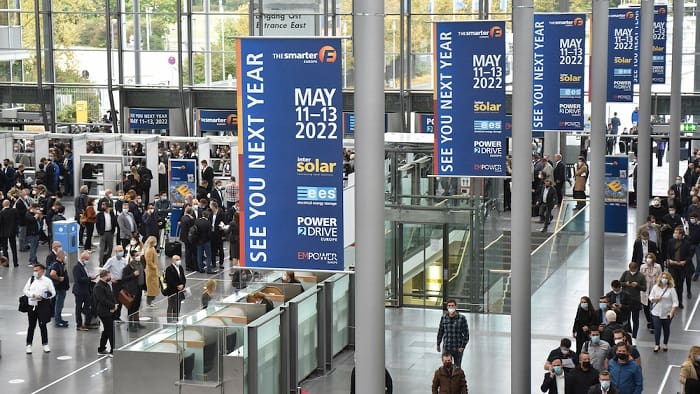After a triumphant three days, it’s clear that The smarter E Europe Restart 2021 was a success. Taking place in a more compact restart format due to the Covid-19 pandemic, the innovation hub for new energy solutions was an absolute success. With more than 450 exhibitors, 45,000 square meters of exhibition space and around 26,000 visitors from 93 countries, it was possible to host the event again for the first time in two years. Responses from exhibitors, visitors, organizers und partners were positive across the board: “We are so happy to finally meet again in person!” The industry is looking forward to the next The smarter E Europe from May 11–13, 2022.
Matthias Taft, CEO at BayWa r.e. AG: “We are so excited that it’s possible to meet personally with our customers and suppliers for the first time in nearly two years of the pandemic. For us, it’s an incredible opportunity to take part in The smarter E Europe Restart 2021 and be able to showcase our innovations and expand our network.” At the core of the innovation hub are the key issues related to a sustainable energy and transportation industry: Renewable energies, decentralization, digitalization and sector coupling as well as smart, connected energy systems. Innovative technologies, new business models and pioneering projects were presented at the accompanying conferences and forums. From October 6–8 October, 2021, a total of four energy exhibitions took place at the innovation hub: Intersolar Europe, ees Europe, Power2Drive Europe and EM-Power Europe, accompanied by two conferences (Intersolar Europe Conference and ees Europe Conference) and three exhibition forums. What’s more, Intersolar celebrated its 30th anniversary this year. Together, these exhibitions share a common vision of creating a smart, sustainable and connected energy supply system. The smarter E Europe puts the new energy world on the map.
Tailwinds for the industry: The bedrock of the new energy world is booming
The European solar market is booming. According to industry association SolarPower Europe, new photovoltaic systems with a capacity of 18.2 gigawatts (GW) were installed in 2020. This represents an 11 percent increase in market volume over the previous year. And all forecasts are predicting further growth, also in terms of jobs: The Swiss plant construction company Meyer-Burger, exhibitor at Intersolar Europe Restart 2021, is revitalizing the Solar Valley in Germany’s Saxony-Anhalt with two factories for solar cells and modules and is creating new jobs in the new energy world. To ensure the success of the energy transition, further expansion of renewable sources of energy is still necessary. According to Carsten Körnig, CEO of the German Solar Association (BSW Solar), a sort of “turbo mode” for solar energy and storage systems is needed now to avoid a looming electrical energy gap in the near future by replacing fossil fuel power plant capacities before it’s too late. In addition to a faster expansion of traditional roof and ground-mounted photovoltaic systems, contributions can also come from building-integrated photovoltaics (BIVP) and agrivoltaics in agricultural areas as well as floating PV. Accordingly, companies such asBayWa r.e. GmbH and Rem Tec Srl have presented innovative agrivoltaic and floating PV systems and products. Photovoltaic systems combined with electrical energy storage for grid control and managing grid congestion are becoming more and more important and will form the backbone of our energy infrastructure in the future, as demonstrated by another highlight: The joint sessions of the ees Europe Conference and the Intersolar Europe Conference on the combination of PV and storage systems.
Storage systems and green hydrogen as the core of the energy transition
The expansion of solar and wind energy is the first step toward a further decarbonization of the energy industry. However, efficient electricity storage systems are crucial – and the storage market is booming along with battery production, both for large-scale and residential storage systems: Investments and government incentive schemes worth billions, rapidly growing revenues and many new players are characteristic for the current market. On site, exhibitors such as Huawei Technologies Co. Ltd., Sungrow Power Supply Co. Ltd. and Fenecon GmbH also provided insights into the dynamic battery storage markets. Expert lectures and discussions held as part of the ees Europe Conference were also devoted to this topic, as were the ees AWARD winners Commeo GmbH, Enphase Energy NL and SAX Power GmbH. “It’s exciting how many people are starting to think about grid security, energy storage and renewable energies. Commercial storage systems are in especially high demand, since companies have recognized the benefits of capping load peaks and easing the burden on the grid as well as saving money. It’s really encouraging to get such positive feedback on our ESS solutions from the international trade visitors,” says Franz-Josef Feilmeier, Managing Director Fenecon GmbH.
Another key element of the energy transition is also gaining ground at the moment. Green hydrogen is becoming an important option with which to couple the energy, heating and transportation sectors more closely by way of renewable energies. “The entire energy storage industry has an exciting future ahead: Green hydrogen perfectly follows the trends and meets the requirements for decarbonization. As the link to the use of renewable sources of energy in all sectors, hydrogen is unbeatable – it also connects the ecological benefits with regional value creation,” says Ove Petersen, co-founder and CEO of the GP JOULE Group. The “Green Hydrogen Manifesto”, which was presented as part of The smarter E Europe Restart 2021 at Messe München, now provides valuable inspiration for advancing this energy source. With this manifesto, the initiators Hydrogen Europe, German Hydrogen and Fuel-Cell Association DWV, European Electrolyzer & Fuel Cell Forum EFCF and The smarter E Europe aim to send a clear signal in favor of decarbonization and a sustainable circular economy. “We are at the verge of a hydrogen market economy: Green hydrogen not only brings incredible opportunities for European industries but is also an entire system integrator at the core of the energy transition. To reach the climate targets, policies must be put in place to pave the regulatory path for this energy source. This is the only way that all of the inspiration and creativity which was so impressively showcased at the exhibition can find its way into the future of renewable, sustainable and cost-effective energy supply,” says Werner Diwald, Chairman of the Board for the German Hydrogen and Fuel-Cell Association (DWV). Find out more about all of the demands in the manifesto as well as the logos of those who have signed: https://www.thesmartere.de/green-hydrogen-manifesto.
E-mobility: The key element between the new energy world and the world of mobility
The role of e-mobility in the new energy world, charging infrastructure as the intersection between mobility and power grids as well as the prospects of the Vehicle2Grid concept as a game changer of the new world of mobility – these are just a few of the main topics at the Power2Drive Europe Restart 2021. At the exhibition and the accompanying forum, the major players of the energy transition in the transportation sector came together: Manufacturers, suppliers, distributors and start-ups presented the latest developments and business models. The integration of Power2Drive Europe and the innovation hub for new energy solutions demonstrates clearly: In order to take advantage of all that the mobility and transportation sectors have to offer, electric vehicles and charging infrastructure must be viewed as an integral part of the energy system. High-performance electric vehicle batteries not only serve as energy storage for vehicles but can also be used as building blocks in the power grid. Electric vehicles make decentralized storage capacity available for the energy transition. Foundations include Vehicle2Grid (V2G), Vehicle2Home (V2H) and Vehicle2Work solutions. “Charging infrastructure is a central element for the success of e-mobility – and at the exhibition, we explored how it relates to other topics such as storage, photovoltaics and regenerative energy. In turn, this event showcased the entire energy and mobility sector, which is incredibly exciting for us,” says Karl Kolmsee, Director Product Portfolio Management at Webasto Customized Solutions.
A firsthand experience of the energy transition
Visitors who took part in EM-Power Europe Restart and the accompanying forum were able to experience the energy transition firsthand. As always, the award ceremony for the Energy Transition Award 2021 for the best utility companies in German-speaking regions was a highlight – the award-winning projects are tangible and put the new energy world at our fingertips. The Energy Transition Award demonstrates that every company – from locally operating municipal utilities to internationally active energy groups – can and must make a contribution to the energy transition. This is evident in the award-winning companies for the category Energy Transition 2021, which include Entega, Stadtwerke Karlsruhe, Stadtwerke Mühlheim am Main GmbH and Stadtwerke Bernau GmbH. Click here for a complete list of winners. Another highlight: The daily sessions on climate neutrality and how companies can achieve this. Businesses have also caught up with the times: More and more companies are switching to cost-effective and environmentally friendly electricity and are embracing climate-neutral production. At EM-Power Europe, special focus was placed on the path to becoming a climate-neutral company, sector coupling in buildings and districts as well as future issues surrounding smart grids and grid infrastructure. “To optimize CO2 emissions, we are focusing on sustainable energy supply through digitization and new business models. By working at the grid edge, the interface between smart grids and prosumers, the relationships between consumption, production and storage are being redefined. In this way, renewable energy can be integrated efficiently and energy supply can be guaranteed flexibly and reliably”, says Markus Mildner, Head of Global Sales, Siemens Smart Infrastructure.
Four exhibitions, one mission
The innovation hub is also just the place for start-ups: Responses on the start-up area and stage were very positive – interested young companies were able to bolster business and directly interact with investors and other companies as part of the Business Speed Dating. Accelerating the transformation: Making renewable energy available 24/7, seven days a week, achieving a connected, clean and modern energy and transportation industry, tackling challenges and seizing opportunities for the entire industry, sectors working together in harmony with each other, advancing flexible solutions and concepts – that’s the vision of The smarter E Europe. And the innovation hub for new energy solutions is not alone in this: A great number of international stakeholders in the modern energy industry gathered from October 6 to 8 in Munich. The smarter E Europe Restart is an important event marking the return of exhibitions and sends an important signal for the industry, which very much welcomes these activities. Visitors and exhibitors who were not able to attend the innovation hub can catch up on everything they missed by accessing articles, statements and interviews in Expo TV: https://www.thesmartere.de/
The smarter E Europe, which encompasses the four individual exhibitions (Intersolar Europe, ees Europe, Power2Drive Europe and EM-Power Europe), will take place from May 11–13, 2022, at Messe München.



